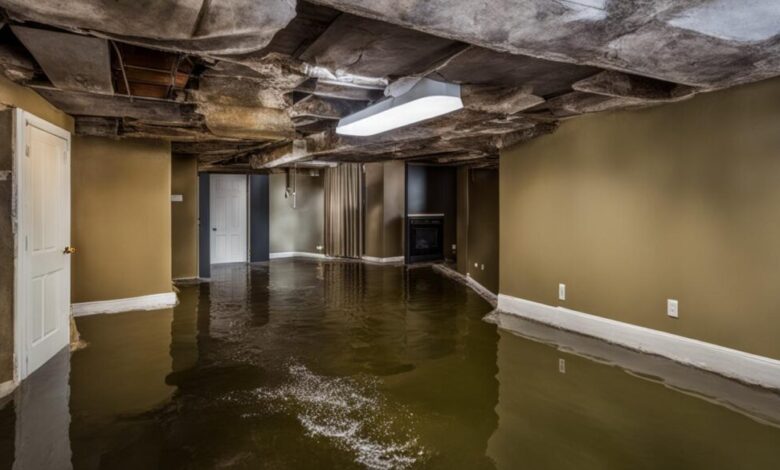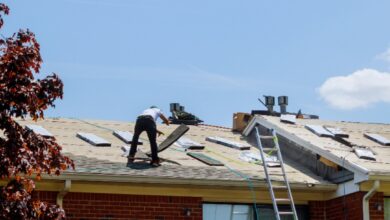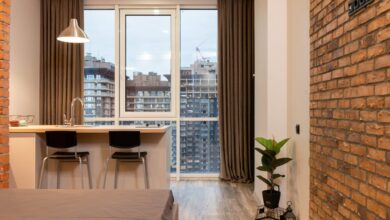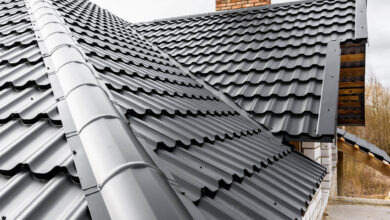Fortress Against Floods: Essential Basement Waterproofing Techniques

Understanding basement waterproofing is essential to protect your home’s foundation from moisture and potential leaks. This preventative measure is fundamental to maintaining your property’s structural health. It safeguards against costly repairs due to water damage, mold growth, wood rot, and other issues that can compromise your home’s integrity and your family’s health. A well-maintained and waterproofed basement can extend your property’s lifespan and ensure healthy and comfortable living spaces. Different methods, such as liquid-applied sealants and sheet membranes, offer diverse protection against water ingress tailored to address different moisture-related issues. Effective damage management requires early detection of basement moisture problems, which may indicate water stains, musty odors, or efflorescence. Basement waterproofing in New Jersey is crucial due to its susceptibility to heavy rainfall and high water tables.
External Waterproofing Solutions
Water intrusion, if left unchecked, can lead to far more than damp walls and musty odors. Over time, persistent moisture can compromise the structural integrity of your home’s foundation. This is where external waterproofing proves essential—not just as a moisture deterrent, but as a defensive strategy against more severe complications like potential foundation issues.
Preventing water from entering the basement begins with addressing issues outside the home. External waterproofing can be one of the most effective methods for long-term protection, as it deals with water at its source, preventing it from ever reaching the interior walls of your basement.
A waterproof membrane applied to the external walls of the basement acts as an impenetrable barrier for moisture. This measure is frequently complemented by a protective drainage board that channels water away, preventing any buildup that could pressure foundation walls.
A well-designed and properly installed foundation drainage system, such as a French drain, is an invaluable component in preventing water accumulation around a home’s foundation, which can be particularly problematic during periods of heavy rainfall.
Thoughtful landscaping can significantly enhance water management around the home’s foundation. Grading the terrain away from the home’s walls and strategically placing plants that absorb excess groundwater can prevent water accumulation and reduce the risk of seepage into the basement.
Internal Waterproofing Strategies
Internal waterproofing methods are used when moisture has already passed through the external defenses. The goal is to manage and redirect the water to mitigate its impact and ensure that it does not cause damage or health issues.
For many homeowners, a sump pump is the heart of an internal waterproofing system. It collects water from weep holes drilled into the foundation or below the basement floor and expels it away from the home. A well-maintained sump pump prevents basement flooding, especially in areas with high water tables.
Applying sealants or coatings on interior walls and floors can be an additional barrier against moisture. These waterproofing paints and sealants can help mitigate dampness, block minor seepages, and fight condensation that often plagues basements.
Managing the interior climate of a basement is essential. A dehumidifier can significantly help maintain low humidity levels, hindering mold growth and maintaining a more comfortable, healthier living environment.
Combining Waterproofing Approaches for Optimal Protection
The most comprehensive protection against water damage often involves a combination of both external and internal waterproofing strategies. By utilizing multiple layers of defense, homeowners can address various issues and accommodate the unique aspects of their home and geographical location.
Combined methods are especially pertinent for properties in low-lying areas or those susceptible to heavy precipitation. By having redundant systems, homeowners can ensure that if one defense is compromised, others will be ready to manage the moisture.
Combining different waterproofing strategies may require more time and money during installation, but it offers excellent long-term benefits. An integrated system provides peace of mind and can prevent expensive repairs in the future, making it a wise investment for your home’s durability and health.
Cost is always a consideration when undertaking home improvements, and understanding the longevity and maintenance requirements of your waterproofing system will help you make the most economical choice. Although certain approaches may be more expensive initially, their durability and effectiveness warrant the investment when contrasted with the potential cost of water damage remediation.
Maintenance and Upkeep of Waterproofing Systems
A well-designed waterproofing system requires regular maintenance to retain its effectiveness. Homeowners should proactively preserve their investments by scheduling routine checks and addressing minor issues before they escalate.
Periodic inspections can catch potential problems early, which is essential in avoiding minor wear and tear escalation into substantial issues. Adhering to a proper maintenance schedule is the key to ensuring the longevity of your waterproofing system.
Sump pumps and dehumidifiers are crucial components that need continual attention to perform efficiently. It is essential to clean and inspect these devices regularly and replace any parts as necessary to prevent failure during critical times.
While routine tasks like cleaning a sump pit or testing a dehumidifier may be within the skill set of many homeowners, certain maintenance aspects require the touch of a professional, particularly when inspecting external systems or addressing more technical issues.
Addressing Emergency Situations and Waterproofing Failures
Even with the best planning and maintenance, unexpected issues such as burst pipes or extreme weather conditions can test the resilience of waterproofing systems. Having a plan in place to handle such situations is crucial.
Rapid response measures such as shutting off the electricity, removing water, and salvaging valuables can minimize the damages if flooding occurs. It is also crucial to contact professionals who can remediate the situation effectively.
Persistent dampness, mold growth, or a malfunctioning sump pump signal that your waterproofing system may require an upgrade or overhaul. These signs indicate that the existing measures are no longer sufficient and that additional or more advanced solutions may be necessary.
Keeping an emergency kit and having contact details for professional emergency services can facilitate a prompt response, minimize damage, and expedite recovery efforts.
Technological Advancements in Basement Waterproofing
New technologies are continually emerging in basement waterproofing, offering enhanced durability and easier installation methods. Staying abreast of these developments can provide property owners with opportunities to utilize more effective waterproofing strategies.
The waterproofing industry frequently sees breakthroughs in materials and their application. For example, hydrophobic membranes and flexible sealants have transformed the level of protection available to homeowners today.
Innovative technology is also beginning to play a role in basement waterproofing. With innovations like intelligent sump pumps that can send alerts to your phone if a problem is detected, homeowners have greater control and insight into their home’s waterproofing status.
The continuous improvement in materials and methods promises increasingly resilient homes. As green technology advances, so will the tools and materials available for basement waterproofing, aligning homeowners with efficient, sustainable alternatives.



